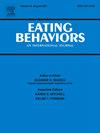Skepticism of and critical thinking about media messages: Conflicting relationships with body dissatisfaction
Abstract
Despite the theoretical connection between media literacy and body dissatisfaction, empirical findings about their relationship are decidedly mixed. There is not a clear explanation for these discrepancies. The present study aimed to 1) compare the attitudes young adult women with those of a reference group of adolescents to examine whether similar values were observed despite differences in age group and racial/ethnic identity, 2) to examine the relationships between media literacy and body dissatisfaction using recommended measures of media literacy. Racially diverse female undergraduate students (N = 152, Mage = 21.62) completed the Media Attitudes Questionnaire, the Critical Thinking about Media Measure, and the Body Shape Questionnaire online. Young adult women endorsed greater critical thinking about media messages and greater skepticism towards the similarity of media messages than adolescents. Additionally, greater skepticism towards the desirability and realism of media messages was associated with lower body dissatisfaction while greater critical thinking about media messages was found to be positively related to greater body dissatisfaction. It is possible that greater critical thinking within the context of media literacy cannot occur without increased attention towards or time spent thinking about media messages. Findings suggest that enhancing critical thinking about the media may not be the main mechanism of change for effective media literacy interventions. These findings underscore the complexities that exist within the relationships between media literacy and body dissatisfaction and highlight the continued need for research in this area.

 求助内容:
求助内容: 应助结果提醒方式:
应助结果提醒方式:


